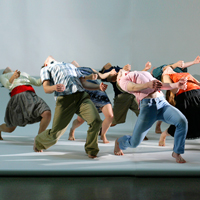
Geographic Focus: Chicago, IL
Background
The core of the Foundation’s arts and culture grantmaking is multiyear, general operating support to over 200 arts and culture organizations in the Chicago region. Of those organizations, Foundation staff make grants directly to the largest 50 organizations. Direct grant sizes range from $52,500 to $100,000 per year (based on annual budget size) over five years. The remaining grants are made by two grantmaking partners, the Richard H. Driehaus Foundation and the Prince Charitable Trusts, which regrant MacArthur funds and provide technical assistance to small and mid-sized institutions.
What We Evaluated
From July to October 2011, grantees and other experts in the arts and culture sector contributed their views and experiences to an evaluation of the general operating support program funded by the Foundation. The evaluation was undertaken to inform the Foundation’s discussions about renewing support for the program after ten years of ongoing investment. While MacArthur leadership had no particular concerns about the program, the evaluation provided new data on this funding strategy’s importance to grantees and on its contributions to the sector. The evaluation activities were organized to address the following questions:
- How did grantees use the general support funds and how important were these grants to the organizations?
- Would other forms of grant support be more helpful than general operating support?
- How effective is the current grantmaking structure and process, including grant applications and reporting requirements, and communication with the funders? Are there ways to improve it?
- What is the current state of Chicago’s arts and culture sector and how does it impact grantees’ ability to operate effectively now and in the future?
- What is the context of local, regional, or national trends for supporting the arts and how should it influence future grantmaking directions?
What We Learned
- A survey and interviews of grantees showed overwhelming approval of the structure and processes of the grantmaking program, regardless of which of the three foundations actually made the grant.
- The vast majority of respondents want to continue receiving general operating support and would prefer this type of grant over specific project support. General support is viewed as a sign of trust in the organizations’ visions, capacities, and importance to the field.
- Participants named a range of costs covered by the general operating support grants − from facilities rental to staff salaries to purchase or maintenance of technology to fundraising costs. The benefits of this flexible funding fell into three categories: (1) used to pay for whatever was needed; (2) used as risk capital, for example, to provide stipends for artists to create a new dance or script; and (3) used for routine costs of doing business such as accounting or marketing.
- Public funding has decreased significantly for all types of organizations, and the economic outlook does not suggest that public dollars will go up in the near future.
- By working with two foundations that had a history of funding smaller and more diverse organizations, MacArthur was able to extend its influence without adding to its staff.
- Grantees suggested many ways that additional financial support could be used: marketing, fundraising, board development, and/or trying new or experimental changes to improve their business models.



